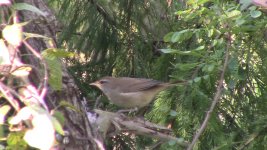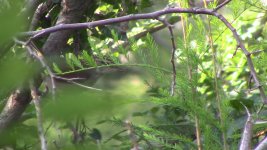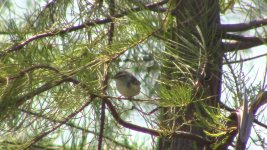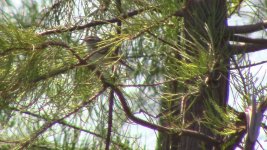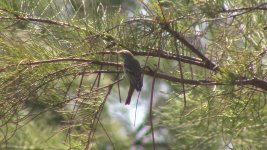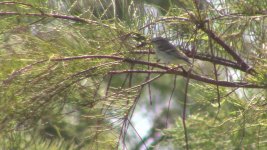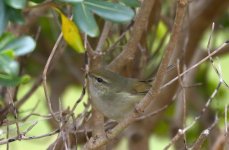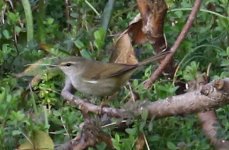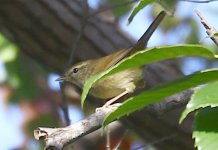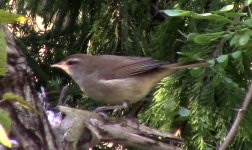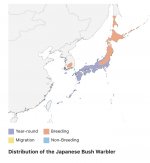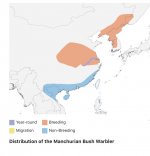Hi Andy.
As I said, I'm confused about the categorization of these birds.
In my copy of Brazil, 'Birds of East Asia', I have a hand-written note that says that ssp canturians of his Korean Bush Warbler has been moved to JBW in 2012 and that the remaining borealis has been renamed Manchurian BW. I can't remember why I made this note or what my source was, but I don't make notes like this often and certainly not without a (presumed by me) authoritative source.
However, I see from Birds of the World that the binomial for MBW is Holornis canturians, so I guess whatever my source was didn't win out, and canturians is back in Manchurian/Korean which makes me wonder why they changed the English name. I had assumed that the form commonly found in Korea was canturians, and that the re-naming was because if the Korean form had been moved to C. diphone, then a new name was necessary for the remaining borealis, hence Manchurian.
I think your description "can also be found in Manchuria, Korea and central China" must (mostly) refer to MBW and not JBW.
Below, I attach distribution maps for JBW and MBW from Birds of the World. I hope this counts as fair use of their intellectual property.
I agree that the birds you link to from eBird look like JBW. However, I wonder about the recording. I like music, but am very unmusical in terms of being able to pick up subtle differences. For several years, at my local spot, I have recorded Phylloscopus warblers 'zitting' in the hopes of getting a Japanese Leaf Warbler (NB 'Leaf') as opposed to a Kamchatka Leaf Warbler (which are common in autumn and spring, year in, year out). A couple of years ago, I managed to catch a JLW with photos and a recording which an expert friend confirmed (also, the bird was several weeks earlier than KLW would normally be). But although my friend could tell the difference of the 'zit' between these two species, I couldn't really do so.
However, it seems to me that JBW and MBW will also have similar but not exactly the same 'zits' and to my ear, the zit of the recording you link to sounds like but not the same as the JBW whose voice I attach (mine seems harsher, stronger, and is typical for birds around me (i.e. I haven't picked a particularly extreme example)). To me the JBW 'zit' sounds just like the sound that is printed as 'tsk!' in comics. Anyway, it's offered here just as is.
PS: Best to R and K
Your linked zit:
https://ebird.org/checklist/S61918685
My JBW zit:
View attachment 1412595
View attachment 1412596View attachment 1412597




